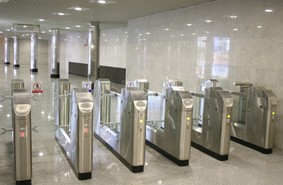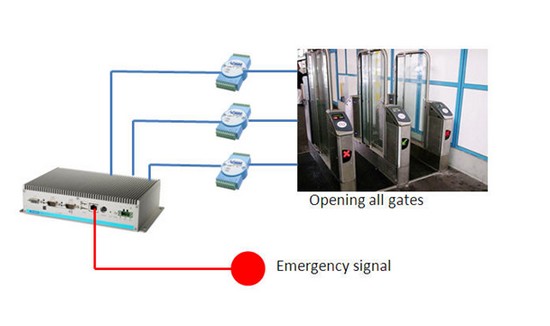Intelligent Gateway controller for emergency solutions in transportation market
 Project Introduction: Project Introduction:
There are two differing views about passenger safety at stations which have dictated station design for the last 150 years or more. For most of the world, it has been assumed that passengers (and other members of the public) will take care of their own safety when walking on or near a railway.
Station entrances and exits must be designed to allow for the numbers of passengers passing through them, both under normal and emergency conditions. Specific emergency exit requirements are outlined in many countries as part of safety legislation or to standards set down by the railways or other organizations. These codes usually define the exit flows and the types of exits allowed for, e.g. the different rates for passages, stairways and escalators. Whatever the codes define, the entrances to a station must be welcoming to the prospective passenger. Stations must also have sufficient entrances to cater for the different sides of the railway route but the number must also take into account the cost effectiveness of each entrance. The cost of staffing ticket offices can be very considerable and the numbers of ticket offices must be managed to suit the patronage offering.
Consideration must be paid to issues such as which way doors open. On the Paris Metro in 1918, a crowd panicked during an air raid on the city and 66 people were killed in a crush trying to get into the station for shelter. The obstacle that triggered the crush was a set of doors that only opened outwards - normally the right direction for safety, but not when the crowd is trying to rush in! Subsequently it became Metro policy that all doors had to open both ways.
System Requirements:
It was with these safety concerns in mind that Dutch company, Thales Hengelo developed the Gateline Emergency Units (GEU’s) especially for the Netherlands railway so that in the event of a fire or other emergency the GEUs will automatically open all the
The GEU is a computer that is connected to a railways fire alarm system and a stations’ emergency button system so that in the event of one of these triggers being activated all ticket gates will open instantly and without any delay. Once the emergency has abated, control of the gates will be returned to the central control room.
To act as a GEU, Thales was looking for a maintenance free fanless computer with a small form factor so they could be installed in 19” racks. They also required small remote access devices that could be positioned near platform gates without causing an obstruction.
Project Implementation:
Advantech helped Thales to find the right solution that used 380 UNO-2173AF Embedded Automation Computers with Intel® ATOM™ N270 processor, low energy consumption and a fanless design that would be connected to the emergency buttons and alarm that would then control 1,140 ADAM-4150 sensor-to-computer interface units that would automatically open the ticket gates.
The complete system is very compact and efficient and without cooling fans is a compact trusted industrial solution.
System Diagram:

Conclusions:
To reduce the impact of a problem that has existed for over 150 years, Thales developed this automatic gate opening system and with Advantech’s industrial automation products were able to implement the solution across Netherlands railways network at a speed and price that was more than acceptable.
Thales is well known for developing difficult radar technology systems and in this project the relation of Thales and the Dutch Railway company came to this project with the idea of developing a reliable security system and it was Advantech that answered the need for a trusted hardware platform so that in the near future, passengers will only be able to enter the train’s stations with a legitimate travel-card. |